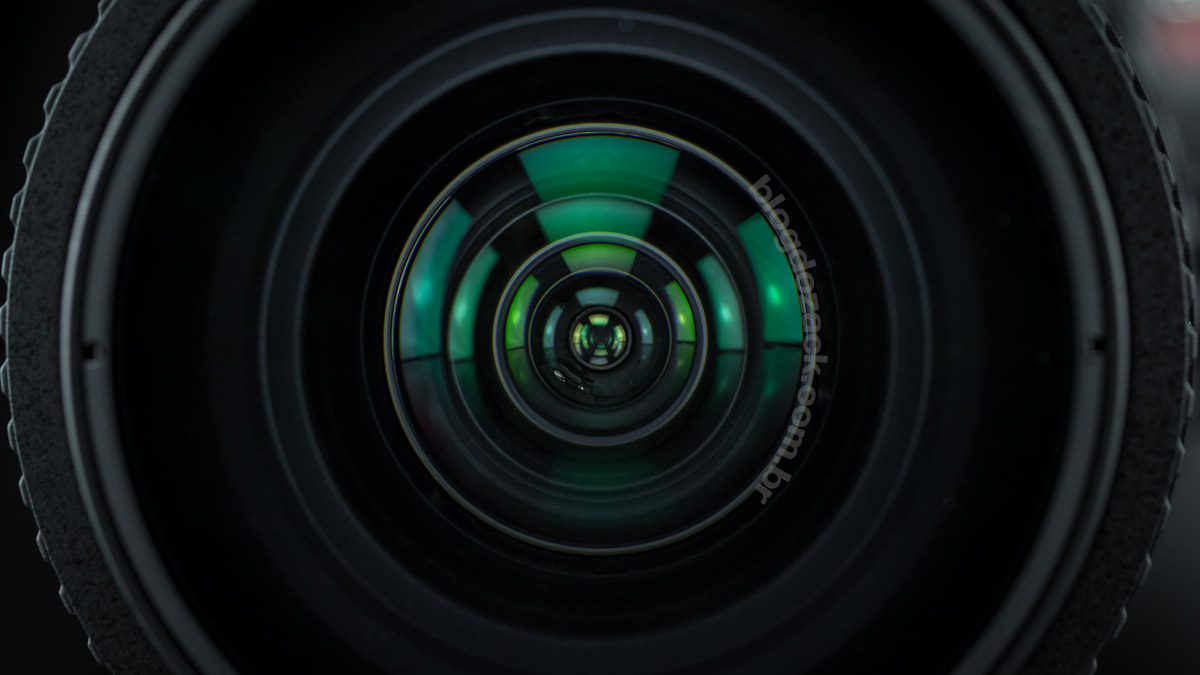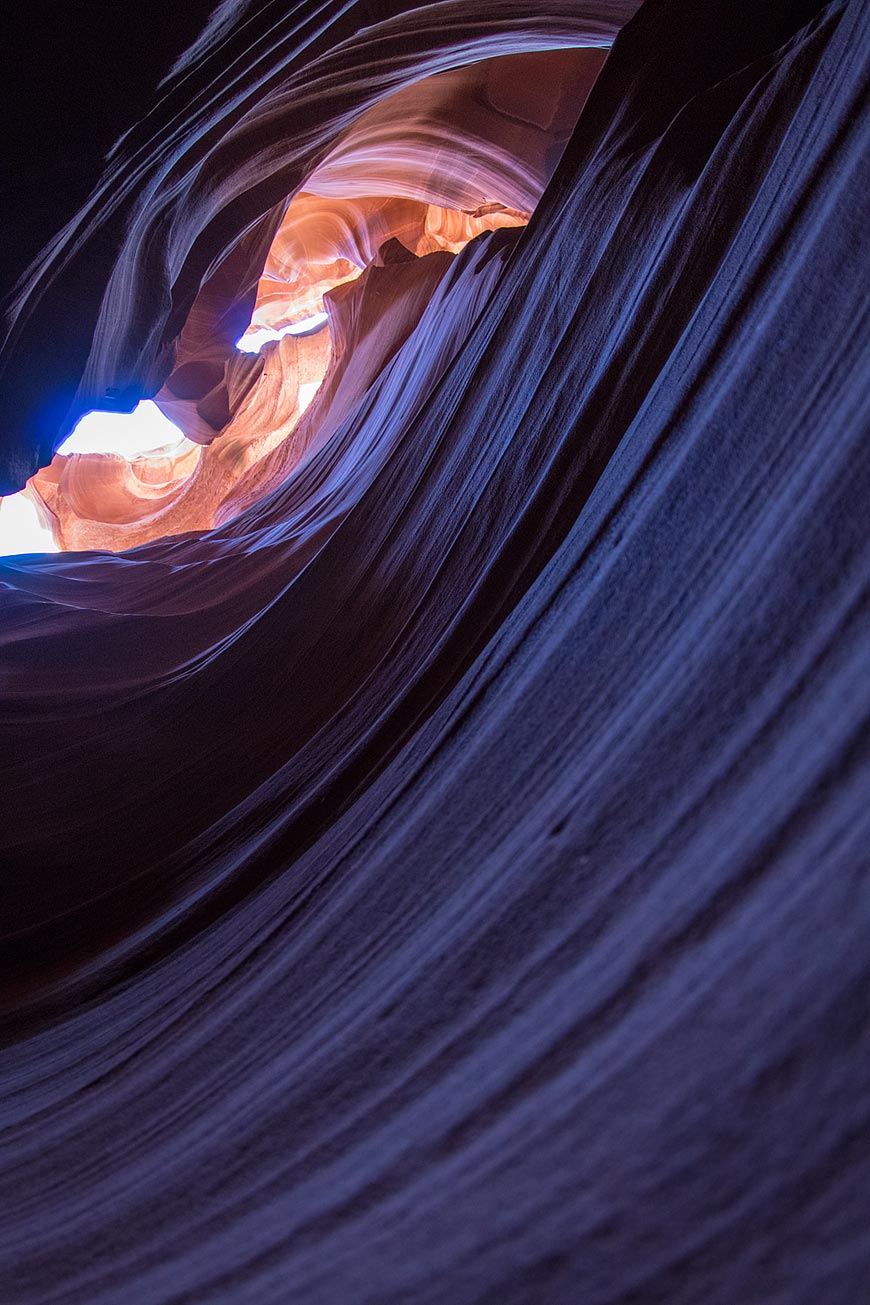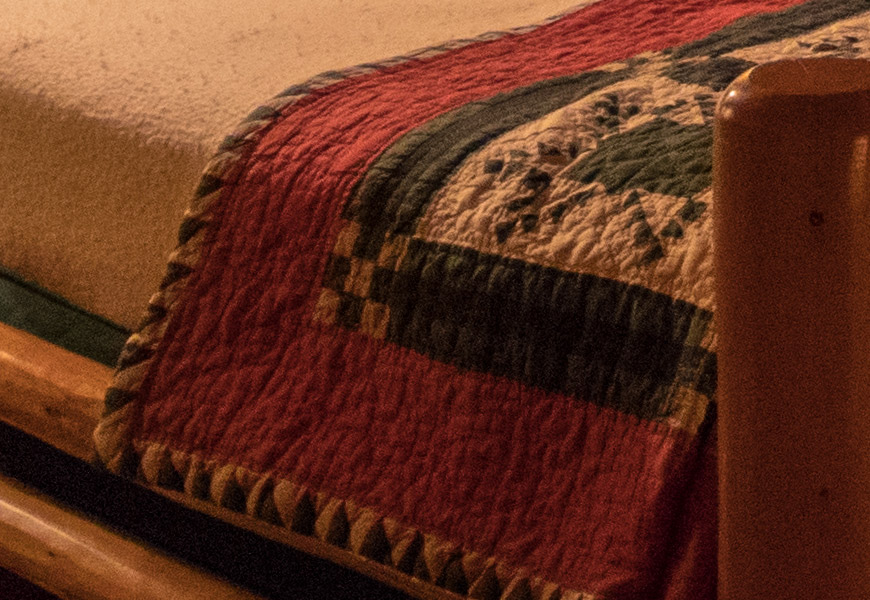Estimated reading time: 10 minutes.
April/2018 – The AT-X DX 107 10-17mm f/3.5-4.5 is Tokina’s third ultra-wide angle zoom lens we see on blog do zack. After the excellent (at least optically) AT-X PROs 11-16mm and 11-20mm both with a maximum f/2.8 aperture and the rectilinear rendering of lines, this variable aperture 10-17mm offers three functions: on APS-C cameras it covers the 180º field at 10mm, with an equidistante fisheye distortion; and on 135-format full-frame cameras the 10mm renders a circular image like Canon’s top-of-the-line 8-15mm or Samyang’s 8mm CS; or a full-frame coverage at 15mm, also featuring 180º. Launched back in 2007, Tokina offers two generations of the same design, one featuring a non-removable lens hood, compatible with smaller APS-C sensors; and a second NH-W/O HOOD version, now supporting full-frame cameras with a circular image at the widest angle. With Tokina’s wide angle expertise, a relatively low-price of US$539, and supporting both formats, is the 10-17 AT-X the best fisheye lens for your kit? Let’s find out! Nice reading.

Disclaimer: I’ll be reviewing the Canon EF/EF-S version that’s different from Nikon’s F. The Nikon lens asks for a built-in-camera focusing motor in, usually found on higher-end models like the D800E/D500; it won’t autofocus with entry-level cameras lower than the D5000 series. However this Canon version does features an in-lens AF motor that’s compatible with every EOS camera. So those shooting Nikon should only consider the “image quality” chapter of this article.

At 7.2 x 6.5cm of 350g of metals, plastic, glass and rubber, the first thing we notice on the Tokina 10-17mm f/3.5-4.5 107 AT-X is it’s size; tiny for a full-frame lens, typical of the fisheye market. Sitting between Canon’s exotic 8-15mm f/4L USM zoom and the vintage 15mm f/2.8 prime in size, the Tokina is an easy addition to your kit, made for the everyday photographer; from full-frame professionals to APS-C amateurs. Its build is also completely metal as we’ve seen on both Tokina’s 11-16/11-20mm, and it actually impresses why the 10-17mm doesn’t fit the AT-X PRO lineup; it certainly can stand years of operation. Also its design feels from yesteryear unlike Sigma’s newer Global Vision or Tamron’s Super Performance, with some visible Phillips screws despite being very solid. And that’s why Tokina is one of the best third-party brands: cheaper, yes; but high quality.

In your hands the 10-17mm fisheye is as simple as it can get. It’s a mere solid barrel with just two adjustments rings and a focusing selection switch, very precisely put together. Near the camera and at finger’s reach the zoom ring is also solid spinning about 90º counter-clockwise from 10mm to 17mm, and it feels very well damped on my brand new copy; a bit on the harder side, made more as a “variable prime”, not to be adjusted all the time. And despite not having Canon’s 8-15mm L limiter switch for APS-C/H formats, the Tokina works well. Mount it on your camera and let it be.

At the front the Tokina 10-17mm highlight goes to its standard manual focusing ring; much better than both Tokina’s 11-16/11-20 f/2.8 zooms “one-touch clutch”. On those lenses Tokina tried to create something clever with a double-function ring, used for both the manual focus operation AND an AF/MF switch; incredibly difficult to use, imprecise, too loose; and very fragile. It’s unbelievable they managed to get such a simple control just wrong, but that’s what the one-touch clutch is for: absolutely nothing! But on this 10-17mm the focusing ring is pretty standard mechanically connected to the AF motor via a proper AF/MF switch, and very precise with minimum play between the external ring and internal focusing groups. Also despite the shorter-than-usual 5º turn from 40cm to infinity, it’s all very simple to use: put it on AF or MF, and adjust the ring to set focus.

Inside Tokina doesn’t declare the technology used by its AF motor, but it doesn’t take a rocket scientist to hear its micro-DC motor; loud, slow and not very smooth; relatively imprecise. This motor emits noise when focusing from side to side, and is mechanically coupled with the manual focusing ring; when set to AF the ring spins when in operation, taking some space from the left hand grip (don’t touch it while it moves). The motor moves the internal barrel front and back, thus changing the focusing distance, all at about 1 second in full length from 14cm (1:2.56 macro) and infinity. And despite the wider angle frame being almost always in focus given it’s long depth of field, many of my shots came out-of-focus. The problem is the camera detects the frame in near focus, given the short 5º distance between 40cm and infinity, and doesn’t operates the motor at all; leaving the shot out of focus. It’s imprecise enough to get most of my landscape shots out of focus and even tested with the EOS SL2′s Dual Pixel Live View, the camera usually refuses to focus (but confirms it on screen). So I recommend reviewing every shot taken with the 10-17mm.


Finally at front the Tokina 10-17 doesn’t accept circular filters, typical of most fisheye lenses. As the first glass element is concave to allow its 180º field of view, no filter would guarantee optical performance around the frame’s edges. But different than Canon’s 8-15F4L/15F2.8 lenses, this Tokina also doesn’t feature a squared gel holder inside the lens mount; it’s completely incompatible with filters. Another difference from the L series zoom is the weather resistance: Canon declares some level of sealing from a rubber gasket around mount and the various controls, but that’s not present on this Tokina. So they declare only an improved chemical treatment on the first element, meant for easier maintenance from dirt and grease. Overall the 10-17mm brings nothing new to Tokina’s wide-angle zoom lineup, with the same excellent build quality from the 11-16/11-20. It’s a simple and robust lens made for the low-cost market but, as we’ll see on its image quality, it might be a good enough candidate for your kit despite the decade old optical formula.

“Láctea” at f/3.5 25s ISO1600 @ 10mm; all photos with the EOS SL2.
With a 10 elements in 08 groups optical formula, one super-low dispersion lens, 6-blade aperture and chemical treatment over most glass pieces, the ten year old Tokina 10-17 performance is fair; not the best, not the worst fisheye lens we’ve seen on vlog do zack. The image quality is a close to its price point: Canon’s 8-15mm US$1249 monster is exponentially better; the US$549 15mm lens is better as well (it’s a prime lens after all); the US$549 Rokinon 12mm f/2.8 prime is also better; and the Tokina 10-17 sits ahead only the ultra-low-cost US$279 Samyang 8mm. It’s optics are far too complex and it can’t deliver the goods on a lower-cost price point. Wide-open its images suffer from some lack of contrast; the edge resolution is acceptable only 2-3/stops from the maximum aperture; and the chromatic aberrations are chaotic, typical of fisheye lenses. So the 10-17 is a good alternative for the intermediary/amateur market, but harder to recommend for most pros.

“Paintbrush” at f/5.6 1/25 ISO800 @ 14mm.
Wide open the Tokina 10-17mm performance is hard to swallow. The optical performance lacks resolution around the edges and the lackluster focusing system enhances the loss of details; almost incompatible with today’s “high density” image sensors, be it APS-C (24MP 80D) or full-frame (50MP 5DS). The details are bad under low-light at f/5.6 that, paired to the relatively short depth-of-field even on longer focusing distance, create very soft edges. It’s easy to see on the EOS SL2 files a merely colorful frame edge in place of proper details, far from the very powerful EF 8-15mm f/4L; no matter the focal length. From 10mm to 17mm the Tokina can’t deliver the goods and, except from some rare moments of brilliance when used in manual focusing mode, it’s difficult to recommend this wide-open zoom lens; stopping down to f/7.1-f/8 is mandatory for the best results.

Crop 100%, the lack of details around the frame’s edges is hard to recommend, no matter the focusing distance.

Crop 100%, the center frame is quite good, but far from Canon’s L performance.

Crop 100%, notice the slight light leakage near the pillow on the background.
Stopping down solves some of the sharpness leaving the photographer’s mind to simply get the focusing right; don’t expect perfect files from the auto-focus system. The edge resolution gets enhanced from f/5.6 to f/8, nice to work with images that will be printed in large-formats, bringing this zoom flexibility to surface; it’s all very nice to use. It’s easy to compensate for some ultra-wide-angle framing moving the zoom ring, optically guaranteeing the native sensor resolution capture; better to cropping in post. On smaller f/stops the details are visible near the frame’s edges that, paired to the longer depth of field, is perfect for all-in-focus landscapes, architecture, sports; despite revealing a third optical formula issue: its severe chromatic aberrations.

Crop 100%, Tokina’s highest resolution that, let’s be honest, it’s just not good enough.

Crop 100%, the longer 17mm focal length is not the sharpest neither.

Crop 100%, there’re no details near the frame’s edges.
Since my very first fisheye lens the lateral chromatic aberrations are a constant on this type of equipment. The strong field curvature makes it impossible to properly focus every wavelength at the same focal plane, and the colors are separated near the frame’s edges; as if they’re going through a prism. This happen from the cheapest GoPro to the top-of-the-line EF 8-15mm f/4L USM, so it’s not surprising to see it on the Tokina 10-17mm zoom. Strong contrast lines near the edges get an extra colored line on fine details like distant mountains and window frames, very visible after some heavy-handed post-processing but as easily fixed. Any computer software (and some cameras) can compensate for such aberrations with minimum image quality loss, as expected.

“Bridge” at f/7.1 1/320 ISO100 @ 10mm.

Crop 100%, sharp faraway details with strong chromatic aberrations on contrast zones.

Crop 100%, easy to fix aberrations visible on this crop.

“Crop 100%”, this leafs are yellow, but it’s so many aberrations…
Another important feature from this type of lens is the presence of internal glass reflections; having some impact on the overall frame contrast, color reproduction and highlight quality. And they’re all very pleasing on the Tokina 10-17mm. Flaring is reasonably well controlled from Tokina’s multi-coating chemical treatment, learned from the 11-16mm and 11-20mm lenses; better with each generation. This is the reason we get three lenses from 11-16/II/11-20mm; Tokina’s improvement on the flaring department. However this much older 10-17mm was already better than its rectilinear peers, and it’s hard to loose contrast due to the presence of a strong light source – almost always in frame on wide-angle shots – a very good performance. Also the 6-blade aperture, despite being simplified, it’s good enough at rendering highlight stars from f/8 an up, visible on stronger light sources. Overall it’s a good performance, expected from a dedicated fisheye lens.

“UP” at f/7.1 1/160 ISO100 @ 10mm.

Crop 100%, six-points highlight stars and no signs of reflections.

Crop 100%, reasonably sharp shapes from the 06-blade aperture.

Crop 100%, Tokina’s maximum sharpness.
Finally the Tokina 10-17mm colors and bokeh are reasonably good; not the most saturated, not the worst. Out-of-focus backgrounds are actually hard to get from such a wide-angle zoom, demanding some creativity from the photographer. The minimum focusing distance is short at 14cm and close enough to render a shallow depth-of-field at the 1:2.65 magnification (semi-macro), great for details with an out-of-focus background; smooth in transitions, but also a bit bland. This happens due to Tokina’s mute tones from its low-quality glass pieces, demanding stronger post-processing adjustments to really enhance colors; get ready for some minutes-per-frame Photoshop sessions for better results. Also Tokina’s colors are balanced more to the yellow tones from the lesser chemical treatments, not as pure as Canon’s EF/EOS color science. So most natural scenarios generate random white balance measurements, demanding further adjustments on raw files. It might work for some flowers and fauna, but it’s an extra step in post.

“Apgar” at f/7.1 1/320 ISO100 @ 12mm; heavy post-processing brought back some of the colors.
The Tokina 10-17mm f/3.5-4.5 AT-X DX “no hood” is an interesting addition to most kits supporting the 180º field on both formats; ready for years of photographs. Its build quality could certainly fit the “Pro” lineup with an all-metal barrel covered with robust plastic rings and high precision finishing; far from a disposable low-cost lens expected from the APS-C market. This new “no hood” model also is better suited for underwater photography and can be used as a stepping stone for a future Canon EF 8-15mm f/4L USM update when you’re ready for better resolution. The Tokina is also very easy to use with “okay” AF performance, paired with a good manual focusing ring; prefer the latter for the best results. But its optical performance is also fair with some moments of brilliance; sealing the deal on the low-cost market. This is not a perfect, always sharp Canon L series; but it works for intermediary kits, good for most web outputs. So if you’re looking for an excellent fisheye lens that can render images on both formats, with immaculate resolution up to 8mm; only the Canon L lens will do. But for the rest, the Tokina is good enough. Nice shooting!